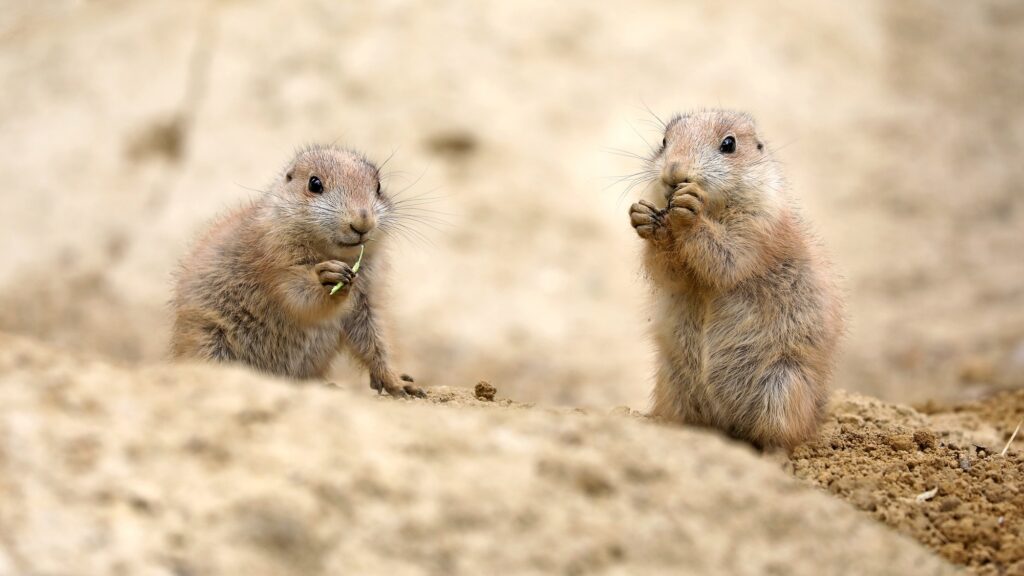19 Facts About Prairie Dog

Introduction
Prairie dogs (Cynomys ludovicianus)1 earned their name from early European explorers who likened their high-pitched warning calls to a dog’s bark. But they are actually large ground squirrels essential to maintaining the prairie landscape. Once numbering in the billions, prairie dog populations have declined over 95% due to habitat loss, poisoning, and disease outbreaks. However, they remain a keystone species that approximately 150 other prairie species depend upon.
Prairie dogs are highly social, burrowing rodents that live in large communities across the grasslands of North America. From their complex underground towns to their unique communication, prairie dogs have captivated humans for centuries. Read on to uncover 19 fascinating facts about these ecosystem engineers.

Facts About Prairie Dog
- Prairie dogs construct elaborate underground burrow systems, with designated nurseries, sleeping quarters, listening posts, and even toilets!
- Called coteries, prairie dog family groups cooperate to raise young, share food, and groom each other. They even greet us with affectionate nuzzles!
- Sentinel prairie dogs keep watch for threats while the colony forages above ground. They use specific warning calls to identify predators by type, size, speed, and color.
- Grasslands grazed by prairie dogs have more nutrient-rich vegetation, benefiting bison, pronghorn, deer, and livestock.
- A single prairie dog town once spanned 25,000 square miles of Texas, with an estimated 400 million dogs2!
- Female prairie dogs only come into heat for one hour per year. Litters range from 3-8 pups.
- As herbivores, prairie dogs primarily consume grass, seeds, flowering plants, and occasional insects.
- The Utah and Mexican prairie dog species are endangered, with habitat loss and poisoning devastating populations.
- Nine species rely on prairie dogs as a main food source, including critically endangered black-footed ferrets.
- Burrowing owls, rattlesnakes, toads, and insects inhabit abandoned prairie dog tunnels.
- Prairie dogs are very territorial. Coteries defend home ranges averaging 1-3 acres.
- Weighing only 2-4 pounds, prairie dogs can run up to 35 mph to evade predators3!
- They make jump-yip displays, leaping with an arched back while making a shrill call.
- Plague outbreaks are the greatest threat to prairie dog survival today, wiping out entire colonies4.
- Prairie dogs have a dichromatic vision and can see blue, green, and some red hues.
- Colonies feature listening chambers to monitor above-ground activity from their tunnels.
- Dust bathing helps prairie dogs minimize parasites and skin infections acquired underground.
- Prairie dog pups emerge from nursery burrows at 6 weeks old. They are communally nursed by group members.
- The black-tailed prairie dog was one of two species described in the Lewis and Clark expedition journals.
Conclusion
From complex communication to ecosystem benefits, prairie dogs are truly remarkable creatures. Their survival is intertwined with the prairie landscape they helped create. Conserving remaining populations and restoring lost habitat remains crucial for prairie conservation. Understanding more about prairie ecology starts with appreciating the prairie dog’s unique role.





